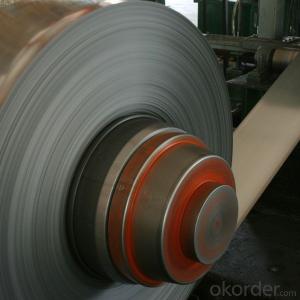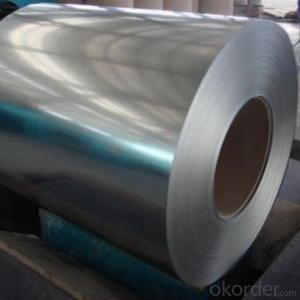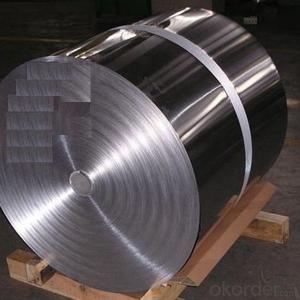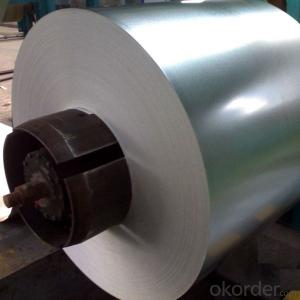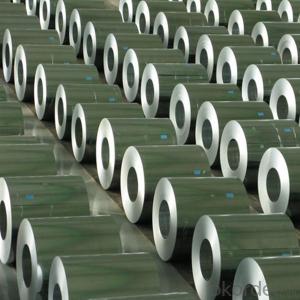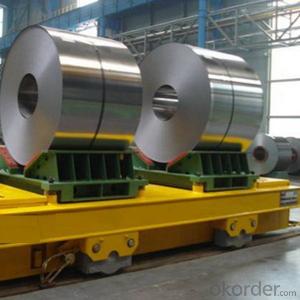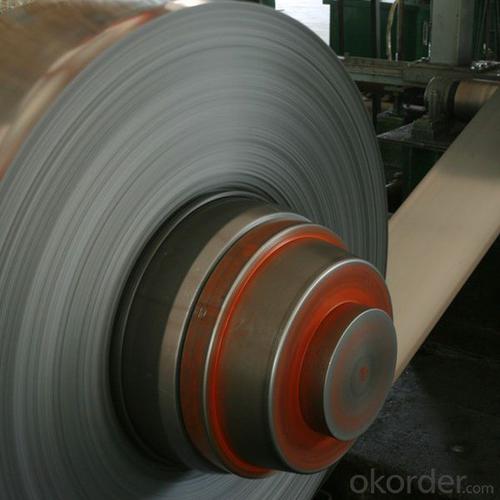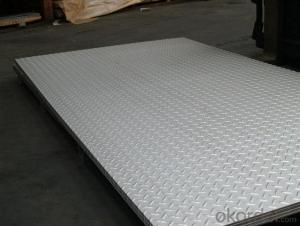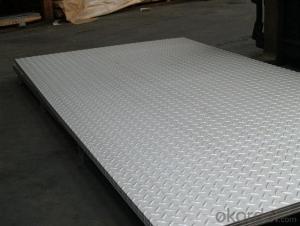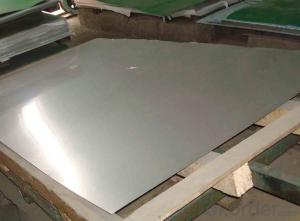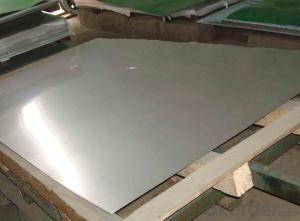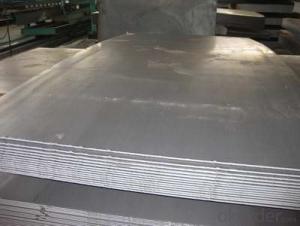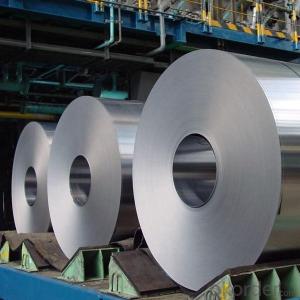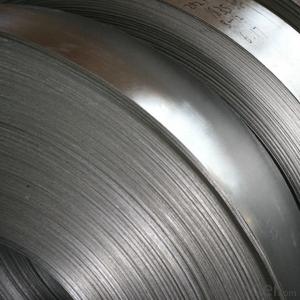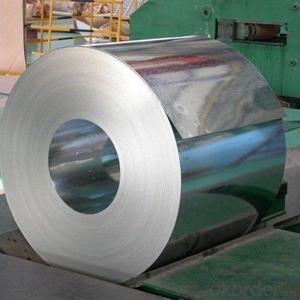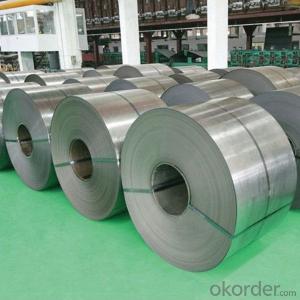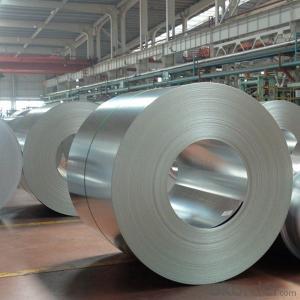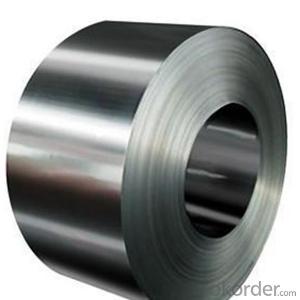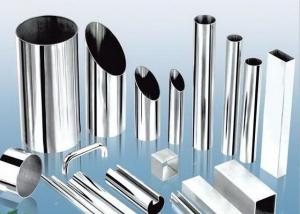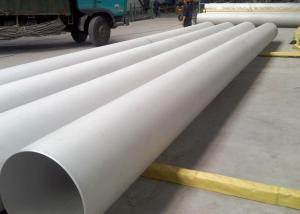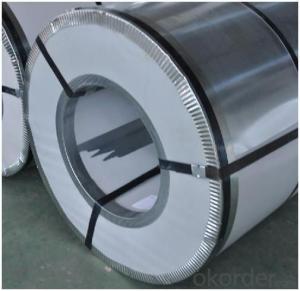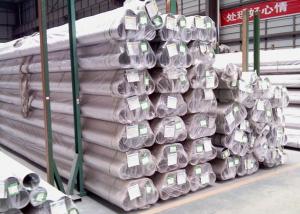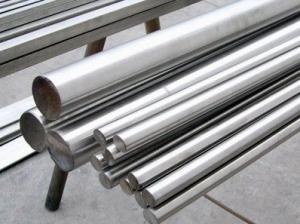Hot Rolled Stainless Steel Coils NO.1 Finish Made in China
- Loading Port:
- Tianjin
- Payment Terms:
- TT OR LC
- Min Order Qty:
- 25 m.t.
- Supply Capability:
- 20000 m.t./month
OKorder Service Pledge
OKorder Financial Service
You Might Also Like
Specification
Products Description for Stainless Steel Coils/Sheets:
Product | stainless steel coils/plates/sheets | ||
Discharge Port | Any Port, China | ||
Size | Coils | Cold Rolled: | Thickness0.3-8mm,Width:280-2100mm |
Hot Rolled : | Thickness3-14mm,Width:650-2100mm | ||
Plates | Thickness2-80mm,Width:1500-3000mm | ||
Coil Weight | About 20 Tons | ||
Grade | 201,202,304/304L/304H,316/316L/316H,321/H,310S,409/L,430 etc. | ||
Technique | Hot Rolled/Cold Rolled | ||
Finish | 2B, BA, 2D, No1, No2, No4,NO.8,SB etc | ||
Edge | Mill Edge / Slitting Edge | ||
Package | In bundles, or as customer's requirement | ||
Place of Origin | Made in China | ||
MOQ | 20 Tons | ||
Packaging & Delivery for Stainless Steel Coils/Sheets:
Packaging Detail Standard export packing or following customer's demand
Delivery Time: Within 30-40 days after deposit or according to the order quantity
Detail picture for Stainless Steel Coils/Sheets
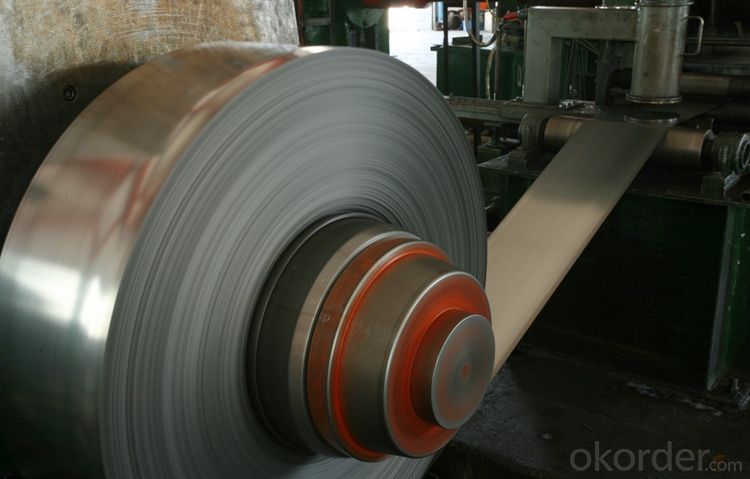

Application for Stainless Steel Coils/Sheets:
Boiler heat exchanger, machinery andpetroleum ,chemical industries, hardware fields,Food industry,construction material,kitchen utensils, building construction, medical equipment,chemical tank, pipe etc
FAQ for Stainless Steel Coils/Sheets:
Q:How to order?
A: Please send us your purchase order by email or fax .or you can ask us to send you a proforma invoice for your order .We need to know the following information for your order.
1) Shipping information-company name, street address, phone number, fax number, destination sea port
2) Product information – Quantity, Specification (steel type, thickness, width, surface finish)
3) Delivery time required
4) Forwarder's contact details if there's any in China
FAQ for Stainless Steel Coils/Sheets:
Q:What are the advantages of your company ?
A: We have many professionals, technical personnel, more competitive prices and best after-dales service than other stainless steel companies.
Q:Can you arrange the shipment ?
A: Sure we can help you with the shipment. We have forwarders who have cooperated with us for many years.
- Q: How do you prevent distortion when welding stainless steel sheets?
- To prevent distortion when welding stainless steel sheets, there are several key steps and precautions that should be followed: 1. Proper preparation: Ensure that the stainless steel sheets are clean and free from any contaminants such as oil, grease, or dirt. Thoroughly clean the surfaces using a suitable solvent or degreaser before welding. This helps to prevent any impurities from being trapped in the weld, which can lead to distortion. 2. Proper fit-up: Accurate fit-up of the stainless steel sheets is crucial to minimize distortion. Ensure that the edges of the sheets are aligned properly and that there are no gaps or misalignments. Proper clamping or tacking can also help to maintain the correct position of the sheets during welding. 3. Controlled heat input: Heat control is essential to prevent excessive distortion. Using the appropriate welding technique, such as TIG (Tungsten Inert Gas) or MIG (Metal Inert Gas), can help control the heat input. It is important to avoid overheating the stainless steel sheets as it can lead to warping and distortion. Maintaining a consistent and controlled heat input throughout the welding process is crucial. 4. Weld sequence: Proper planning of the weld sequence can also help to minimize distortion. Start from the center and work outward in a balanced manner to distribute the heat evenly. This prevents localized heating, which can cause distortion. Alternating between sides and allowing each weld to cool before moving to the next one can also help to reduce distortion. 5. Proper welding technique: Choosing the right welding technique and parameters is important. For instance, using a lower heat input, slower travel speed, and smaller weld bead can minimize distortion. Additionally, using a backstep technique, where the weld travels in a forward and backward motion, can help distribute the heat and reduce distortion. 6. Preheating and post-weld treatment: Preheating the stainless steel sheets can help reduce the temperature gradient and minimize distortion. The preheating temperature should be within the recommended range for the specific stainless steel grade. After welding, it is advisable to perform post-weld treatment, such as stress relieving, to minimize residual stresses that can lead to distortion. By following these steps and precautions, it is possible to significantly reduce distortion when welding stainless steel sheets. However, it is important to note that each welding process and stainless steel grade may have specific requirements, so referring to the manufacturer's guidelines and seeking professional advice is recommended for optimal results.
- Q: Are stainless steel sheets non-magnetic?
- No, stainless steel sheets are not inherently non-magnetic. While certain types of stainless steel can be non-magnetic, such as the austenitic variety (grades like 304 and 316), many other types of stainless steel can still exhibit magnetic properties. This is particularly true for ferritic and martensitic stainless steels. The magnetism in stainless steel is determined by its composition and crystal structure. So, if you are specifically looking for non-magnetic stainless steel sheets, you should opt for the austenitic grades.
- Q: How do stainless steel sheets compare to other types of sheet metals?
- Stainless steel sheets offer several advantages over other types of sheet metals, making them a popular choice in various industries. Firstly, stainless steel sheets have excellent corrosion resistance properties, which is particularly crucial in environments where exposure to moisture or chemicals is common. This resistance to corrosion ensures that stainless steel sheets maintain their structural integrity and aesthetic appeal over an extended period of time. Another key advantage of stainless steel sheets is their high strength-to-weight ratio. Stainless steel is renowned for its durability and strength, allowing manufacturers to use thinner sheets without sacrificing structural integrity. This not only reduces material costs but also makes stainless steel sheets easier to handle and install. Furthermore, stainless steel sheets are highly versatile and can be customized to meet specific requirements. They can be easily formed, welded, and fabricated into different shapes and sizes, making them suitable for a wide range of applications. Stainless steel sheets are available in various finishes, such as brushed, mirror, or satin, allowing for aesthetic customization as well. In terms of hygiene, stainless steel sheets offer exceptional cleanliness and ease of maintenance. Their smooth, non-porous surface prevents the buildup of bacteria, dirt, or contaminants, making them suitable for applications in the food and healthcare industries. Additionally, stainless steel sheets are resistant to high temperatures, making them ideal for use in heat-intensive applications such as industrial ovens or automotive components. Lastly, stainless steel sheets have good sustainability credentials. They are 100% recyclable, allowing for the conservation of resources and reducing environmental impact. Moreover, stainless steel is composed of a high percentage of recycled content, further enhancing its eco-friendly characteristics. Overall, stainless steel sheets outperform other types of sheet metals in terms of corrosion resistance, strength-to-weight ratio, versatility, hygiene, and sustainability. These qualities make stainless steel sheets a top choice for applications in various industries, including construction, automotive, aerospace, food processing, and many more.
- Q: How do I prevent galvanic corrosion on stainless steel sheets?
- There are several measures that can be taken to prevent galvanic corrosion on stainless steel sheets: 1. Opt for a suitable stainless steel alloy: Select a grade of stainless steel, such as 316 or 317, which is less susceptible to galvanic corrosion compared to 304 stainless steel. 2. Keep dissimilar metals separate: Avoid direct contact between stainless steel sheets and other metals, particularly those with a higher potential for galvanic corrosion. If contact is necessary, use insulating materials like gaskets or rubber pads to create a barrier between the metals. 3. Apply protective coatings: Use specially designed protective coatings or paints for stainless steel to create a barrier that shields against galvanic corrosion. These coatings act as sacrificial layers, safeguarding the stainless steel from direct contact with corrosive substances. 4. Utilize isolation materials: Install insulating materials, such as plastic washers, insulating tape, or non-conductive gaskets, between stainless steel sheets and other dissimilar metals. This prevents direct electrical contact and subsequent corrosion. 5. Maintain proper upkeep: Regularly clean and inspect stainless steel sheets to remove any contaminants or foreign substances that may contribute to corrosion. Avoid using abrasive cleaners or tools that could damage the protective layer of the stainless steel. 6. Employ electrochemical protection: Implement cathodic protection techniques, such as sacrificial anodes or impressed current systems, to introduce an external source of electrons that counteracts galvanic corrosion. These methods help shift the corrosion potential of the stainless steel sheets to a more passive range. By adhering to these preventive measures, the risk of galvanic corrosion on stainless steel sheets can be significantly reduced. This ensures their longevity and helps maintain their structural integrity.
- Q: How do I prevent corrosion under insulation on stainless steel sheets?
- To prevent corrosion under insulation on stainless steel sheets, there are several steps you can take: 1. Proper insulation selection: Choose insulation materials that are compatible with stainless steel and have a low water absorption rate. Avoid using materials that can cause galvanic corrosion when in contact with stainless steel. 2. Adequate insulation thickness: Ensure that the insulation thickness is sufficient to prevent moisture condensation on the stainless steel surface. Condensation can trap moisture and accelerate corrosion. Consult with an insulation specialist to determine the appropriate thickness for your specific application. 3. Vapor barriers: Install vapor barriers between the insulation and the stainless steel sheets. Vapor barriers act as a moisture barrier, preventing the ingress of water or moisture that can lead to corrosion. These barriers can be made of materials such as foil or plastic films. 4. Proper installation: Ensure that the insulation is properly installed, with no gaps or areas where moisture can accumulate. Pay close attention to joints, seams, and connections, making sure they are tightly sealed to prevent water penetration. 5. Regular inspection and maintenance: Regularly inspect the insulation system to identify any signs of damage, such as leaks or deterioration. Promptly repair any damaged insulation or vapor barriers to prevent moisture from reaching the stainless steel surface. 6. Ventilation: Provide adequate ventilation to prevent moisture buildup in enclosed spaces. Good airflow can help reduce the chances of condensation and subsequent corrosion. 7. Cathodic protection: Consider using cathodic protection methods, such as sacrificial anodes or impressed current systems, to protect stainless steel sheets from corrosion. These methods create an electrical current that counteracts the corrosion process, extending the lifespan of the stainless steel. Remember, it is essential to consult with corrosion specialists or insulation experts to ensure the best practices are implemented for your specific application and environment.
- Q: Are stainless steel sheets suitable for architectural facades?
- Yes, stainless steel sheets are highly suitable for architectural facades. Stainless steel is a versatile and durable material that offers several advantages when used in architectural applications. One of the main reasons stainless steel sheets are suitable for facades is their aesthetic appeal. Stainless steel has a sleek and modern look that can enhance the overall appearance of a building. It can be finished in various ways, such as brushed, mirrored, or patterned, allowing architects to achieve the desired design aesthetic. In addition to its visual appeal, stainless steel is also highly resistant to corrosion. This makes it ideal for outdoor applications, as it can withstand exposure to harsh weather conditions, pollution, and other environmental factors without deteriorating. Stainless steel's corrosion resistance also means that it requires minimal maintenance, reducing long-term costs and efforts associated with facade upkeep. Another advantage of stainless steel sheets for architectural facades is their strength and durability. Stainless steel is a strong material that can withstand impact, making it suitable for high-traffic areas or buildings located in areas prone to severe weather events. It is also resistant to staining, scratching, and fading, ensuring that the facade remains attractive and intact for an extended period. Additionally, stainless steel is a sustainable material choice for architectural facades. It is 100% recyclable and can be reused without losing its properties, making it an environmentally friendly option. Stainless steel's longevity also contributes to sustainability, as it reduces the need for frequent replacements over time. Overall, stainless steel sheets are a highly suitable choice for architectural facades due to their aesthetic appeal, corrosion resistance, strength, durability, and sustainability. Whether used in modern or traditional designs, stainless steel can provide a long-lasting and visually pleasing solution for enhancing the exterior of buildings.
- Q: Can stainless steel sheets be used for escalator steps?
- Yes, stainless steel sheets can be used for escalator steps. Stainless steel is a popular choice for escalator steps due to its durability, strength, and resistance to corrosion. It can withstand the constant foot traffic, heavy loads, and the wear and tear that escalator steps are subjected to on a daily basis. Additionally, stainless steel has a sleek and modern appearance, which adds to the overall aesthetic appeal of escalators. This makes stainless steel sheets a reliable and practical choice for escalator steps in various commercial and public settings.
- Q: What is the water resistance of stainless steel sheets?
- The water resistance of stainless steel sheets may vary depending on the grade and finish of the stainless steel. In general, stainless steel exhibits excellent resistance to water, making it suitable for a variety of wet and humid environments. The chromium content in stainless steel gives it inherent corrosion resistance, resulting in the formation of a protective oxide layer on the steel surface. This oxide layer acts as a barrier, preventing water and other corrosive substances from reaching the underlying metal. However, the water resistance can be further enhanced by selecting stainless steel grades with higher corrosion resistance, such as 316 or 904L. Moreover, the water resistance of stainless steel sheets can also be influenced by their surface finish. Smooth and polished finishes tend to offer better water resistance compared to rougher finishes, as they provide fewer crevices for water accumulation, which could potentially lead to corrosion. In summary, stainless steel sheets provide excellent water resistance and find extensive use in marine environments, food processing facilities, and outdoor architectural structures.
- Q: Are stainless steel sheets resistant to acids?
- Yes, stainless steel sheets are generally resistant to acids due to their high levels of chromium and nickel, which form a protective oxide layer on the surface, preventing corrosion and making them suitable for various acid-related applications.
- Q: Are stainless steel sheets suitable for architectural panels?
- Architectural panels can indeed be made from stainless steel sheets, which offer a plethora of benefits. Stainless steel is a remarkably versatile and durable material that is resistant to corrosion, staining, and rust. This makes it an excellent choice for exterior applications, where exposure to harsh weather conditions is expected. Furthermore, stainless steel maintains its appearance over time, ensuring that architectural panels retain their aesthetic appeal for many years. What sets stainless steel apart is its capacity to offer a wide range of design possibilities. It can be fabricated into various shapes and sizes, allowing for the creation of unique and visually captivating architectural panels. Architects and designers can also choose from different finishes, including brushed, polished, or patterned, to achieve the desired look and feel for their projects. Moreover, stainless steel is environmentally friendly due to its full recyclability. By opting for stainless steel sheets for architectural panels, architects and designers can contribute to reducing the environmental impact of construction projects. All in all, stainless steel sheets provide an exceptional combination of strength, aesthetics, and sustainability, making them highly suitable for architectural panels. Whether it be for exterior cladding, interior partitions, or decorative elements, stainless steel offers a durable, versatile, and visually appealing solution for architectural design.
Send your message to us
Hot Rolled Stainless Steel Coils NO.1 Finish Made in China
- Loading Port:
- Tianjin
- Payment Terms:
- TT OR LC
- Min Order Qty:
- 25 m.t.
- Supply Capability:
- 20000 m.t./month
OKorder Service Pledge
OKorder Financial Service
Similar products
Hot products
Hot Searches
Related keywords
